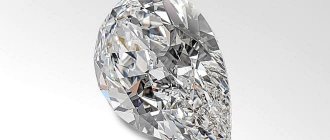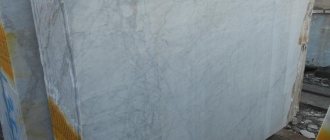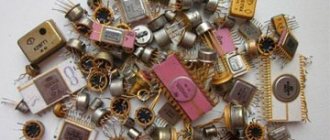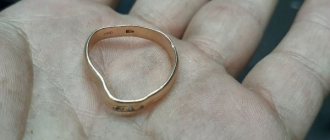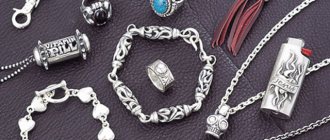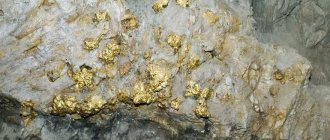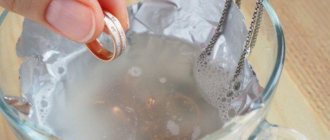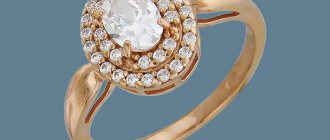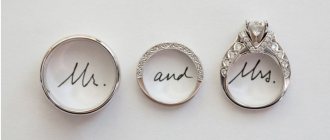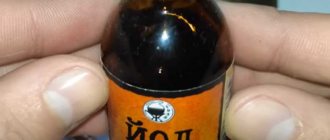Diamonds touch the heart of even the most indifferent people to jewelry - the beauty of this stone is magical. Even if you don’t want to buy a piece of jewelry for your collection, you want to stop for a while in the eternal bustle and admire the brilliance of the edges, the depth of the glow, the delightful play of radiance and diamonds. Their beauty is mesmerizing, as is the cost of stones of excellent quality, cut, and shape. Alas, the jewelry world is not always as flawless as these precious stones; unpleasant surprises and attempts to pass off completely different stones as diamonds do occur. It is not difficult for jewelers and gemologists to recognize a fake, but the buyer often has to rely only on the data in the product certificate.
Avoiding unfair deals is actually not that difficult if you know how to distinguish a diamond from other similar stones. In this review, we will compare the characteristics of the most famous diamond doubles using examples: we are sure that even if you are guided by a photo and faced with a choice in real life, you will learn to notice the most characteristic signs that this is a fake.
What stones are they trying to pass off as diamonds?
We would like to make a reservation right away: in the world of jewelry there are legal analogues of diamonds and this does not mean that the stones are fake. Cubic zirconia artificially created in the USSR and lesser-known moissanites are to one degree or another similar to diamonds, and conscientious sellers always indicate the characteristics of the stones in the certificate. There is plenty of information about cubic zirconia, as well as the stones themselves, but moissanites, from the group of natural carbides, are extremely rare in their natural form and cost a lot, so their synthetic analogues are more common.
| Moissanite improved | Moissanite synthetic | cubic zirconia | Diamond |
In addition to cubic zirconia and moissanites of any origin, under the best conditions, colorless topaz or leucosapphire (a colorless stone of the corundum group) can be roughly similar to diamonds. Attempts to pass off rock crystal as a diamond were also encountered in the non-professional jewelry world, but the properties of this stone are so far from the appearance of a cut diamond that the seller’s cunning was exposed in the first seconds after the display of the mineral or jewelry with it.
| Leucosapphire | Colorless topaz | Rhinestone |
Sapphire and topaz clearly show the natural heavenly shade characteristic of these stones in their natural color - shades of blue, light blue. And if in diamonds the reflections of this spectrum are also well expressed, then in corundum and topaz the color penetrates the entire stone, and does not remain only on the edges. Rock crystal does not have even a third of the light refraction properties that are observed in any diamond, even not of the highest quality.
Fog test
This is one of the simplest and most economical tests. In addition, it is quite reliable. To find out if a diamond is real, you need to place it directly in front of your mouth and breathe on the mineral to create a kind of mist.
If the fog remains on the stone for more than two seconds, this indicates that it is not a real diamond. Real diamonds instantly dissipate heat from breathing and therefore virtually no fog forms on them, much less it will not last long.
To see the difference, you need to try this experiment on real and fake stones.
Methods for checking diamonds
If you carefully examine the photographic examples, the first and most significant difference between natural stones and artificial ones is their purity. Natural origin will always be distinguished by the presence of any kind of inclusions inside a diamond (and any other stone); small cracks, so-called “curtains” and other defects, without which no natural stone can do, will be noticeable. It is impossible to create such inclusions in synthetic stones; artificial analogues are always transparent and do not have a single defect.
| Diamond | cubic zirconia |
On some natural stones, these nature marks are visible without magnification, but if you intend to purchase a diamond or a finished product with one, arm yourself with a small loupe with 10x magnification. Such a device is quite inexpensive, a few hundred rubles, offered under the name “binocular magnifying glass,” but it will come in handy many times in life, and not only when buying diamonds.
In addition to a magnifying glass, which will instantly reveal the secret of the origin of the stone by magnifying the inclusions in it, you can identify a diamond using... letters. Yes, yes, you will need any printed text on a light background, even a black line will do. Through cubic zirconia you can even see the letters on a business card, but with a diamond you won’t be able to read it. Moissanite has different optical properties and depends on the type and quality of polishing of the girdle - a ghosting effect may be observed.
| What happens if you look through cubic zirconia and diamond at the line |
Another reliable and simple method will help you distinguish a diamond from a moissanite: you will need a bright flashlight, water, a white sheet and a plastic cover. Place water in the lid, stones in the same place, shine a flashlight from above so that the reflection of the diamonds and moissanites transfers to the paper. The reflections from diamonds will resemble the flame of a gas burner on a home stove, and moissanites, being a quarter brighter than diamonds, will show long beams with a wide spectrum of color.
| Diamonds | Moissanites |
And another, popular and effective way to check whether a diamond is in front of you or not is a transparent glass of water.
If you immerse a diamond in water, it will be impossible to see it in the glass. It is not true.
A diamond in water does not reflect, but the edges of the stone themselves are clearly visible. Diamond analogues - cubic zirconia and moissanite - will produce colored highlights at a certain incidence of light.
| Diamond visible in water | |
We can recommend to the most meticulous and principled buyers a simple and inexpensive device, a tester that focuses on the thermal and light radiation of stones. In popular online stores, such devices are sold for a very reasonable price, less than 1000 rubles, and the efficiency of the device is quite enough to identify a diamond or other stone in a second. There is a limitation: no household tester can recognize diamonds larger than a carat.
Professional authentication methods
A purchased diamond can be checked for authenticity (for a fee) by a jeweler in a workshop or salon that sells items made of precious metals. For express analysis, a diamond detector is used. The check takes 8-10 minutes.
Outdated models of such devices only examine the thermal conductivity of the mineral, and therefore do not always provide reliable information about the authenticity of the stone. This tester will not help identify moissanite because it has the same thermal conductivity as a diamond.
Professional jewelers who specialize in working with diamonds use an advanced diamond authentication tester. He studies the refraction of light. In this indicator, moissanite is ahead of diamond, which makes it possible to immediately detect a fake diamond.
The diamond tester only tests cut crystals.
Such a device will not be able to examine a rough diamond and determine its authenticity.
The most accurate result is guaranteed by the use of three sensors that analyze reflectance, luminescence and photoluminescence. Inexpensive diamond testers give a 50/50 result - “either a diamond or not.” Such devices cannot be trusted.
Experienced jewelers are able to identify a diamond without the use of technology. To distinguish a diamond from a semi-precious imitation or glass, they examine the stone using the following criteria.
Light
Diamonds have special optical properties that are easy to detect by visual inspection in the light or using a magnifying glass with 10x magnification:
- They give the same intense shine not only from above, but from all sides.
- In directed light they scatter with silvery reflections.
- Opaque. Light falling on a smooth surface of a stone is reflected from the edges.
If you look at the stone from above, you will see many iridescences and a tiny dot in the middle - a thorn. There is a simple way to check this property: draw a letter on a piece of paper and try to see it through the mineral. If it's a diamond, you won't see anything.
Comparison
To distinguish a genuine diamond from other stones, it is enough to know a few basic differences:
- A real diamond is a natural formation; it is never absolutely pure. Looking at it through a magnifying glass, you will definitely see the smallest imperfections in it. If the stone has a perfectly smooth and even surface, you have an artificial analogue.
- A cut diamond sparkles and shimmers so much that other stones appear inexpressive and faded against its background. However, it is difficult to distinguish a stone by this indicator. Some artificially synthesized minerals (moissanite) can sparkle no worse than diamonds.
- Diamond is a record holder for strength; after processing, its edges become sharp and clear. In glass imitators they are less sharp and somewhat rounded.
Distortion
A natural diamond does not exhibit double refraction. If you shine light on it and look through a magnifying glass, you will notice that a direct light beam is reflected from its edges. It never splits in two or deviates to the side. If it turns out that one face reflects two rays (flat and inclined), it is cubic zirconia.
Weight
A reliable method that jewelers have long used to assess the authenticity of diamonds is weighing on a carat scale. It is based on the fact that the size of the stone must correspond to the carat weight. It is known that zircons are half as heavy as diamonds, so a fake will be immediately detected.
The weight of precious stones is expressed in carats: 1 ct = 0.2 g. For example: small diamond: 2.0 mm = 0.029 ct; medium: 3.0 mm = 0.098 ct, 5 mm = 0.450 ct; large: 6.5 mm = 1.010 ct, giant at 9 mm = 2.59 ct.
Frame
A diamond is an elite stone, so jewelers are very meticulous about setting it in a product. Depending on the frame, it appears larger or smaller. The frame allows you to hide minor defects and foreign inclusions. Metal, setting and setting are factors that will help distinguish a real cut diamond from a budget fake.
When purchasing diamond jewelry, check it for compliance with the following rules:
- High purity diamonds are usually set in platinum or white gold. It is believed that white metal does not distract attention from the luxurious stone, but only highlights the brilliance and luxury.
- Colored diamonds are set in red or yellow gold. It harmoniously combines with fantasy stone.
- Silver frames are not elite enough and expensive. Cut diamonds are inserted only into jewelry made of precious metals - gold and platinum.
- A diamond is set in one of three ways. A popular type of fastening is using tiny metal claws (prongs). Blind fastening is a reliable method of encrusting products with diamonds, but it visually reduces the size of the mineral. Much less common is corner setting, when the stone is inserted not into a prepared socket, but into the metal plate itself. Other fastening methods are also used, but the underside of the stone is always left open. If the stone is fastened carelessly (loose, too recessed into the frame, the distances between adjacent paws are not the same) - it is not real. Diamonds are not treated this way.
- No adhesive setting is used for natural stones. Artificial crystals are “planted” on the glue.
To make sure the stone is set in platinum or white gold and not silver, check the hallmark of the metal.
Ultraviolet
A more accurate method that will distinguish a diamond or a cut diamond from inexpensive counterparts of artificial origin is based on the use of ultraviolet light. If you have a quartz medical or ultraviolet lamp at home (for drying gel polish), shine it on the stone and evaluate the result:
- Under ultraviolet light, diamonds emit a bluish glow.
- If the stone does not react to exposure to UV rays, it is glass or another imitation diamond.
- The appearance of a green, gray or yellow glow indicates moissanite.
Diamonds have another specific feature - they are invisible in X-rays. But this property cannot be tested at home.
How to distinguish a diamond from cubic zirconia
It is not difficult to distinguish between a diamond and cubic zirconia placed next to each other if you have already had similar experience or are a jeweler, but there are still characteristic features that are accessible to everyone, without the use of complex equipment.
The same unnatural transparency and complete absence of any kind of defects inside the stone are the first and unconditional exposer of synthetic diamond analogues. Cubic zirconia, also known as cubic zirconium, is also somewhat cloudy when held up to the light. If a large stone is used in jewelry, it is impossible to mistake its origin: cubic zirconia does not look so airy, does not have the play of light even close to the quality of a diamond, and the radiance of the facets is not as luxurious in color.
| cubic zirconia | Diamond | Diamond | cubic zirconia |
However, it would not be entirely correct to devalue the beauty of cubic zirconia, since these stones most often accompany sapphires, emeralds, rubies, and other precious and semi-precious stones. It is very beautiful and at the same time practical, since the cost of the product is reduced, but the appearance is not attractive.
| Cubic zirconias and sapphires | Ruby with cubic zirconia | GT emerald and cubic zirconia | Topaz with cubic zirconia |
Note!
If it is quite easy to recognize cubic zirconia in a large stone, then with small sizes you should be more careful. You can check the diamond in front of you and the cubic zirconia without instruments if you breathe on the stones. A natural diamond, even a small one, will not fog up, but cubic zirconias will develop a characteristic haze.
Hold it up to the light to see how it sparkles
Real diamonds reflect light in a special way; a genuine stone will sparkle from the inside in shades of gray and white, but will cast rainbow reflections on other surfaces (a phenomenon known as "fire"). A fake diamond will play with all the colors of the rainbow.
“People are misled into thinking that diamonds sparkle like a rainbow, when they don’t. They sparkle, but in shades of gray. If you notice rainbow reflections inside the stone, it may not be a real diamond.”
How to distinguish a diamond from moissanite
The fogging test can also be applied to moissanites, and this is the first thing that an artificial stone will reveal. If natural cubic zirconia does not exist in nature, this is the development of physicists, then with moissanites everything is more complicated. There are natural and synthetic stones. The artificial version of moissanite is more common, and stones weighing half a carat can be purchased for $100-150. A beautiful shine when cut correctly is brighter than a diamond, and the impeccable purity of moissanite, as befits synthetics, adds beauty. It also reveals the artificial origin of the stone. Even the shape of the cut does not affect the brightness and clarity.
| On the left is moissanite, on the right is diamond | On the left is moissanite, on the right is diamond |
It’s not easy to find jewelry with natural moissanite, and it’s not profitable for anyone to pass it off as a diamond – the prices per carat are almost equal. Natural moissanite with a diameter of more than 2 mm has not yet been found, and if you have a larger stone in front of you, it is definitely not natural moissanite, but whether it is a diamond or not needs to be examined separately. Remember? The easiest way is to breathe on the stone. The diamond will not fog up.
Like cubic zirconia, synthetic moissanite is often used as a companion to precious stones, and due to the brighter play of light, moissanite very favorably emphasizes the beauty of natural stones. This synthetic analogue of a diamond with corundum group gemstones looks especially beautiful.
| Moissanite framed with rubies | GT emerald and two moissanites | Sapphire and moissanites |
But any analog is just a replacement of the original, its imitation, and if there were any opportunity in the world to create an artificial stone that exactly replicates the properties of a diamond, its value would not be so high.
What attracts the creators of fakes?
Diamond light, the transparency of the stone, the hardness of the mineral cannot leave anyone indifferent. Some, admiring the external form, considering it perfect, try to have jewelry from such beauty or create them, others use it in construction and technology, creating durable, convenient tools, others believe in the miraculous qualities and properties of the mineral, stocking up on natural talismans against the evil eye and infidelity, from witchcraft and storms.
However, not all of these properties are possessed by fakes. Man cannot make an exact copy of nature. At least one indicator will not fit. But more often only the form succeeds, and even then not always.
Nature triumphs. Having created her masterpiece, a diamond, from pure carbon at great depths under high pressure and temperature, she managed to conquer the hearts of those living on Earth. Her creation is unique. Only someone ignorant of the matter, who does not know the true brilliance, can confuse one with the other.
Having learned how to cut a mineral, people refined the stone, giving it a fabulous price and value. That is why there were those who wanted to replace genuine beauty and strength with human creation. Many fakes look very similar. Some artificially grown stones are very close to the original. But they do not have the magic of centuries, there is no strength, strength, protection from nature itself.
How to distinguish a diamond from rock crystal
This stone has no jewelry value; the mineral is an ordinary variety of quartz and has its same properties. The purity of crystals is the main disadvantage of rock crystal, since the mineral does not have it, and samples with high transparency are rare. However, as in the case of cubic zirconia, you can look through the rock crystal into light and recognize contrasting text or images. The stones can be identified by their cloudy girdle (remember, this is a cut in the middle along the entire circumference), they are characterized by a “gassed” effect - when examining the mineral, you can notice clusters of tiny inclusions.
| You can see the background behind the mineral | Opaque girdle | Lots of small inclusions |
In addition, rather large minerals are used in rock crystal jewelry, and the stones themselves can be recognized by their characteristic, barely noticeable “haze” inside.
Professional tests for diamond recognition
If, when conducting home tests, it is not clear whether the diamond is real or fake, then you can resort to various types of professional tests. Jewelers have special equipment, as well as tools that will help distinguish the original from the fake.
It is possible to determine the authenticity of a stone using tests such as high-sensitivity scale weights, heat, and powerful microscopes. However, the most reliable test is ultraviolet light. A real diamond has a bluish light when exposed to ultraviolet light. The deeper the blue color, the greater the value of the stone and the purer it is.
Found a violation? Report content
Checking a diamond for authenticity in a laboratory or with a specialist
If you buy ready-made jewelry or an accessory with a diamond, it must be accompanied by a gemological certificate or product passport. This procedure is established by law in Russia; the need for examination is determined by the weight of the diamonds. Up to 1 carat, as a rule, a store tag or a certificate in the form of the selling organization is sufficient, but requesting an examination for diamonds up to a carat is the personal choice of the owner.
Stones larger than a carat undergo mandatory examination according to one of the standards. The GIA certificate is valued all over the world - having such a diamond passport in hand, no country in the world will have problems confirming the characteristics of the jewelry, and the characteristics of the stone are described in the document extremely accurately.
If you really want an accurate assessment from an expert, don't go to commercial labs. In such companies, the quality characteristics of the stones are deliberately overstated so as not to lose customers who may not like the rating that is not high enough. Independent laboratories and institutes are the best choice and the most accurate results of testing diamonds for authenticity and quality.
It just so happens in the jewelry world that certificates from Hong Kong, Israel, and Russian commercial laboratories are not trusted. While American grading standards and Russian government centers, on the contrary, have proven the validity of diamond grading.
Buying Tips
Finally, a few recommendations that will definitely not be superfluous:
- A diamond is the most expensive stone on the planet; the cost of 1 carat of the best jewelry purity in Russia in 2022 tends to one million rubles. Too low a price should alert you.
- In some cases, moissanite can be determined by a simple temperature test - heat the pebble to +70 degrees Celsius. The carbide compound will certainly turn green and retain a specific shade even after complete cooling.
- A drop of ordinary sunflower oil on a genuine diamond remains an even pea, but on any of the imitations it spreads in different directions.
- An extreme testing option is to drop sulfuric or hydrochloric acid onto the surface of the stone. Most synthetic fakes will inevitably corrode.
- Contrasting temperatures will help identify glass. A sharp drop will certainly affect the counterfeit - it will become covered with a fine web of cracks or even crumble.
- It is extremely difficult to distinguish colorless topaz from diamond using most tests, since both stones have approximately the same hardness on the Mohs scale. Here only spectrometer data and painstaking laboratory examination will come to the rescue.
In unpleasant situations, when the slightest doubt arises about the authenticity of the products, do not hesitate to demand regulatory documents from the seller. If we are talking about expensive jewelry inlaid with a stone weighing more than 1 carat, then by default it is accompanied by a GIA certificate, or its Russian equivalent - MGC at Moscow University.
Photos of the most beautiful diamonds in the world
Despite their impeccable beauty, diamonds of special quality have a bloody trail through centuries of history. Alas, the legends have only softened over a long time and have survived to this day in a relatively acceptable form. Of course, the 21st century has finally completed the list of terrible crimes associated with diamonds, and today stones are exhibited, sold at auctions and passed on by inheritance without the frightening crime, as was the case historically. But there are also diamonds that are crystal clear before fate and the law; we give three such examples below.
Please note that even the most famous, highest quality diamonds still have inclusions, albeit tiny ones: these defects are the direct, simple and most honest proof of the authenticity of the gemstones.
Diamond Cullinan
– its two aristocratic parts belong to the sweetest lady from Great Britain, or rather the entire English court. And the complete Cullinan family includes 9 large diamonds and about a hundred small ones. The original diamond measured 11 x 5 x 6 cm and weighed more than 600 grams (3106 carats).
| Cullinan I 530 carat | Cullinan II 317 carats |
Excelsior
– held the title of the largest diamond until the birth of Kulinan. The original weight of the Excelsior diamond was 995 carats, and after cutting, 21 beautiful diamonds were seen, and all of them quickly went to private collections and fashionable jewelry houses.
| The largest of the Excelsiors | Heidi Klum, Excelsior advertising | Diamond before cutting |
Centenary
- closes the top three and at the same time is the most mysterious, albeit infinitely beautiful diamond in the world. 274 carats were cut by professionals from De Beers, and the stone owes its origin to the same mine in South Africa where Cullinan was found. Today Centenary is not exhibited and, moreover, it is unknown where this marvelous diamond, insured for a record amount of $100 million, is located.
The cost of such diamonds is incalculable, and it is unlikely that at least one of them will ever be sold again. The price of 2.5 million dollars for one of these stones is very modest, and a diamond presented by Heidi Klum as a swimsuit decoration was sold for $11 million.
In our store, diamonds are presented, of course, not in such a stellar format, but the authenticity and quality of the stones indicated in the characteristics certainly does not raise doubts or questions.
The catalog of diamond products includes various jewelry and accessories; we are sure that here you can find a gift for yourself or a loved one. All diamond products come with an expert opinion, and when purchasing online there is an additional 5% discount.
Multifaceted palette of synthetic diamonds
A completely transparent diamond is considered the rarest and most expensive. Although stones with shades are also in demand and attract the eye with their mesmerizing beauty.
Today, several types of colored artificial diamonds are produced in the world:
- Blue (from pale to rich heavenly shade, which is obtained by adding boron to the composition; reaches 1.25 carats);
- Yellow (from light lemon to rich bright yellow and even orange; this palette is formed by nitrogen; such diamonds can reach 2 carats and are much easier to grow than blue ones);
- Pink, red, lilac, green (depending on the addition of various impurities during processing, you can get diamonds of the most incredible shades).
A little history about artificial diamonds
The first “counterfeits”, substitutes for natural diamonds, were recorded back in 1920.
Charles Parsons invented the prototype of the current synthetic crystal. It was so superbly performed that it ended up in the necklace of the famous Sybil Shepherd. The decoration later became one of the relics of the British Empire. It is interesting that no one else has yet succeeded in replicating that very first “fake” diamond, although the author himself was not too pleased with his creation.
Before World War II, two US companies decided to mass produce diamonds. In laboratory conditions, they conducted the first experiment using carbon. The starting material was subjected to pressure and high temperatures. The ardor of inventors subsided during the war, although many researchers are sure that diamonds were needed specifically for military needs, and then the need for them disappeared.
Known for its diamonds is QUINTUS, a project of Swedish businessmen. It is he who owns a huge batch of stones. They were used mainly in industry, since they were not very beautiful for creating jewelry, even rough, and did not reach the aesthetics of jewelry.
The first precious diamond was created in Tokyo in 1997. It was smoky, with shimmer and a yellowish tint characteristic of real stone. Today Japan controls about 8% of the world's diamond production. The USA and China are rightfully considered “monsters” in the field of stone synthesis.
Now this is a full-scale production, allowing jewelry lovers to sparkle with luxurious jewelry. Pebbles grown in “incubator” conditions are inserted into pendants, rings, and used to decorate clothes and shoes. At the same time, their cost does not hit the budget so much.
Owners of large jewelry chains do not share much enthusiasm for the massive flooding of the market with “counterfeits.” It is estimated that they will lose more than 15% of the profits from the sale of natural stones.
If you are picky and want to have real diamonds and are willing to pay for their natural origin, we advise you to know by sight all their synthetic substitutes.
Growing a diamond at home
As you can see, the process is very interesting; good craftsmen earn fabulous sums in the diamond industry. Are you ready to try yourself in this profession? Then let's start our experiment.
We will need:
- Microwave;
- 3 pencil leads (graphite), about 3 mm thick;
- 15 cm cotton thread;
- 2 mugs;
- Olive oil.
And now the action itself:
- Pour a little olive oil into a small saucer and place a thread around its perimeter so that it absorbs the excess.
- Now lift the thread a little and tie it into a weak knot. Let's pass a graphite rod into it. You can place it on 2 toothpicks so that it is just above the surface of the oil. You can gently pull both ends of the thread, tying a tight knot. Leave this entire structure for half an hour.
- Wash and dry the microwave thoroughly; there should be no food residue or dust.
- Turn the mug over and place it in the microwave. Place the two remaining rods on it, and the prepared oil rod across them. Cover the top with a second mug. Turn on the stove at maximum temperature and time.
- In the end, the unoiled rods will remain untouched, and the area that was impregnated will melt and a diamond will form in its place. You cannot touch the structure with your hands right away, otherwise you risk getting burned.
You can admire your own creation, and even if this creation does not exactly resemble a jewel, but rather a craft from a “young chemist” set, but you have learned the basics of “stone processing” and “diamond mining”.
